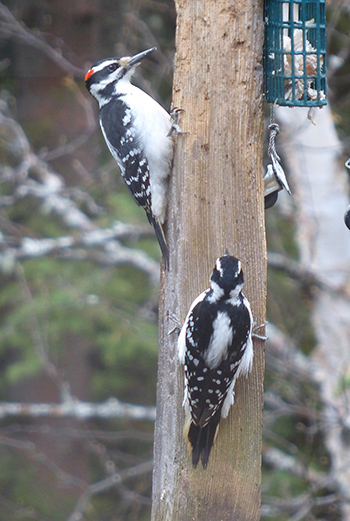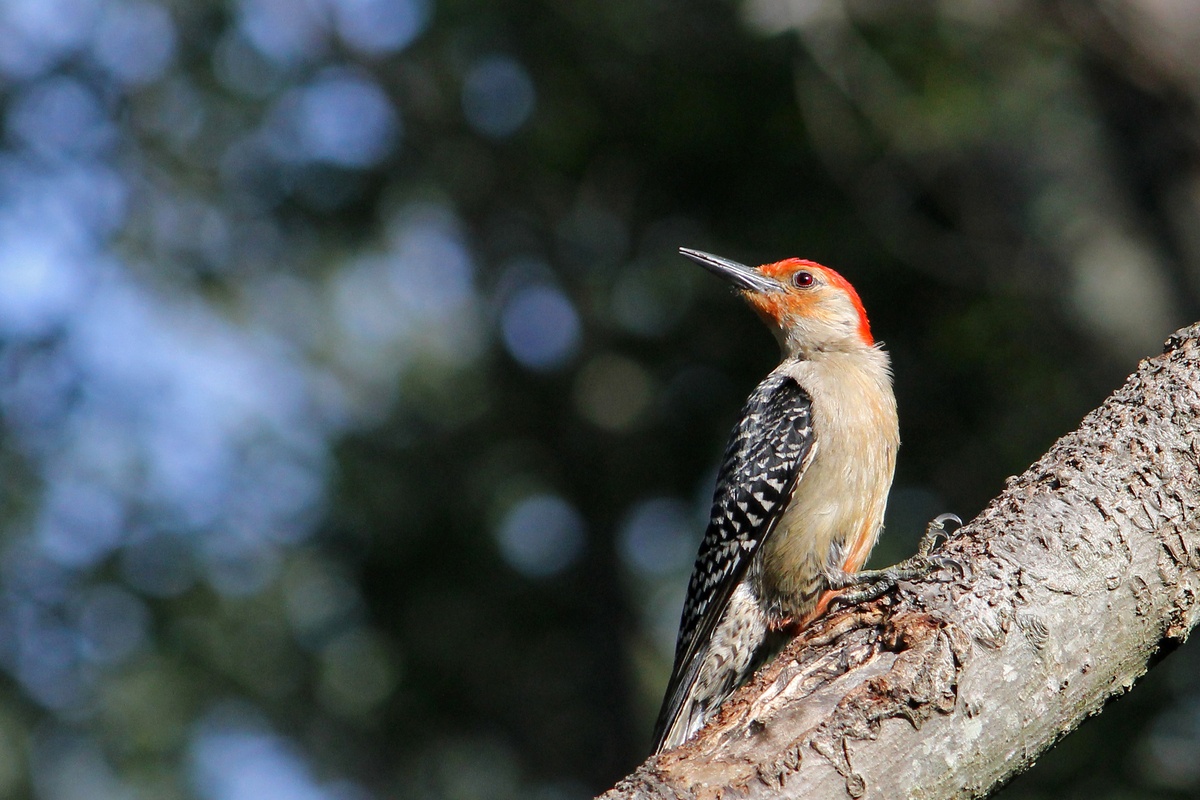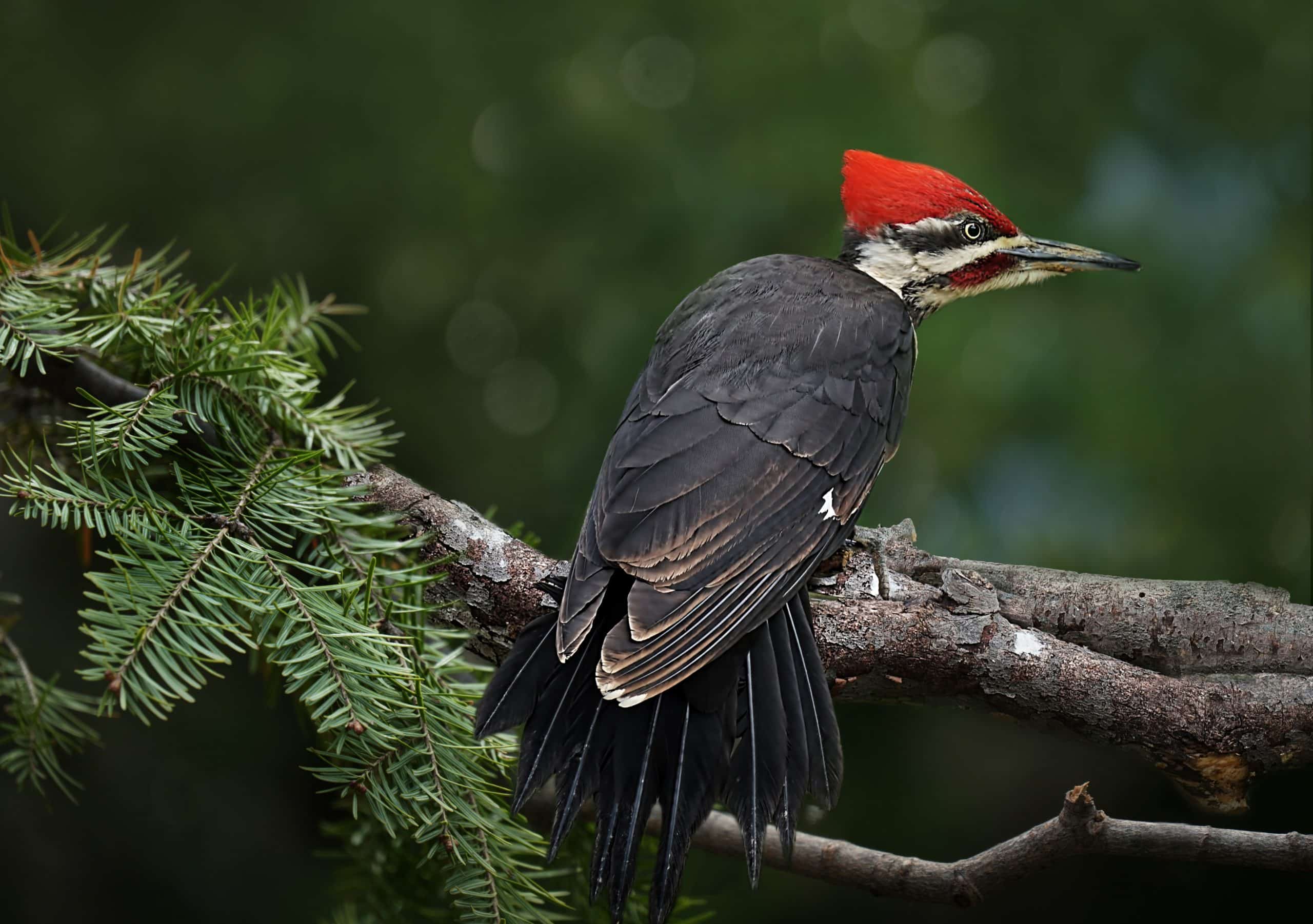Comprehending Woodpeckers in Florida: Behavior, Species, and Habitats
Wiki Article
Woodpeckers: A Comprehensive Overview to Recognizing These Special Birds
Woodpeckers, with their distinct behaviors and physical characteristics, have actually long astounded the interest of ornithologists and nature enthusiasts alike. From their rhythmic drumming resembling with the woods to their exceptional adaptations for scaling tree trunks with simplicity, these birds offer a remarkable research study in avian biology. However, what absolutely sets woodpeckers apart is not just their striking appearance yet likewise their vital duty in preserving the delicate equilibrium of environments. As we discover the elaborate anatomy, varied species, and eco-friendly importance of woodpeckers, a deeper admiration for these distinct birds and the enigmas they hold unfolds.
Woodpeckers' Drumming Habits
Woodpeckers exhibit a rhythmic and accurate drumming behavior that offers numerous essential features in their lives. This actions is mostly related to interaction, area defense, and foraging. The distinct drumming audio is produced by the fast pecking of their beaks against tough surface areas such as tree trunks, branches, and even steel items.Communication is an essential aspect of woodpecker actions, and drumming plays a considerable role in this procedure. Woodpeckers make use of drumming to develop their visibility, bring in companions, and maintain call with their partners and offspring. The regularity, strength, and period of drumming sequences share certain messages to other woodpeckers in the location.
In addition to communication, woodpeckers make use of drumming behavior for region protection. Woodpeckers in Florida. The loud and repeated drumming works as an advising to prospective intruders, indicating that the area is currently claimed. By developing their territory via drumming, woodpeckers reduce the probability of conflicts over beneficial resources such as food and nesting websites
Furthermore, woodpeckers also employ drumming as a foraging strategy. The balanced pecking helps them situate bugs concealing beneath the bark of trees by developing vibrations that interrupt the target's camouflage. This habits showcases the flexibility and resourcefulness of woodpeckers in using their drumming abilities for multiple crucial purposes.
Special Adjustments for Tree Climbing
Having actually grasped the art of drumming to connect, safeguard region, and forage, woodpeckers have evolved distinct adaptations that facilitate their amazing climbing abilities in their arboreal habitats. Woodpeckers have zygodactyl feet, with two toes pointing forward and two toes pointing backward. These tail plumes provide security and equilibrium, making it possible for woodpeckers to steer up tree trunks with accuracy and agility.Additionally, woodpeckers have powerful neck muscle mass and a distinct skull structure that help in their climbing up capabilities. Their strong neck muscles allow them to swiftly eat tree bark without experiencing whiplash, while their thick head and little brain act as shock absorbers, shielding them from the influence of duplicated drumming. These adaptations collectively enable woodpeckers to browse the vertical world of trees with performance and elegance.

Function of Woodpeckers in Ecological Communities
Playing a critical duty in forest environments, woodpeckers add significantly to the balance and wellness of their environments through their distinct habits and communications with other species. One of the crucial eco-friendly features of woodpeckers is their duty in managing insect populaces. By foraging for pests under the bark of trees, woodpeckers aid regulate insect populaces, protecting against break outs that could damage the overall health of the forest. Furthermore, woodpeckers produce tooth cavities in trees that offer as crucial nesting sites for a variety of various other bird varieties, advertising biodiversity within the ecosystem.Moreover, the drumming and articulations of woodpeckers play a crucial function in communication and region facility. These sounds not just serve to draw in mates however also aid specify limits between various woodpecker areas, minimizing conflicts and advertising a harmonious coexistence within the woodland neighborhood. In general, the presence of woodpeckers in woodland environments highlights their significance as keystone species, affecting the characteristics and working of these habitats in complex means.
Makeup: Specialized Beaks and Feet
In the complex internet of woodland environments, the specialized beaks and feet of woodpeckers are important adjustments that enable them to meet their essential environmental roles. Woodpeckers possess one-of-a-kind anatomical functions that are especially developed to help them in their foraging and nesting behaviors.The most unique attribute of woodpeckers is their strong, chisel-shaped beaks. These beaks are completely adjusted for drilling into wood to uncover pests, larvae, and sap concealed beneath the bark of trees. her latest blog The solid muscle mass and strong framework of their beaks allow woodpeckers to peck at a rate of up to 20 times per second without causing damages to their heads.
Additionally, woodpeckers have specialized feet that aid in their acrobatic climbing capabilities. Their feet have 2 toes pointing onward and 2 toes aiming in reverse, offering a solid grip on vertical surfaces (Woodpeckers in Florida). This distinct foot plan, along with rigid tail feathers that function as an encouraging prop, permits woodpeckers to stick to tree trunks and branches easily while they search for food or excavate nesting cavities
Woodpecker Species Diversity
Woodpeckers are a varied team of birds discovered across numerous environments her latest blog worldwide, with over 200 recognized species exhibiting adjustments to different environments. Woodpeckers have actually developed to inhabit an array of atmospheres, from forests and timberlands to grasslands and deserts, each offering special challenges that have actually influenced the evolution of unique woodpecker species.An additional contributing variable to woodpecker types variety is their specialized feeding habits. Different species have actually developed to manipulate various food resources, such as insects, tree sap, fruits, and nuts, bring about the advancement of details adaptations in beak form, dimension, and toughness. These adaptations allow woodpeckers to forage effectively in their respective habitats, reducing competitors amongst types and advertising niche distinction. Additionally, geographic seclusion and historic elements have actually contributed in forming the distribution and diversity of woodpecker varieties, resulting in the large array of specialized adaptations seen in these interesting birds.

Final Thought
In verdict, woodpeckers are fascinating birds that check these guys out show unique drumming actions, specialized adaptations for tree climbing, and play crucial duties in communities. With a varied range of woodpecker varieties found worldwide, these birds are crucial for maintaining the wellness and balance of forests and timberlands.Report this wiki page